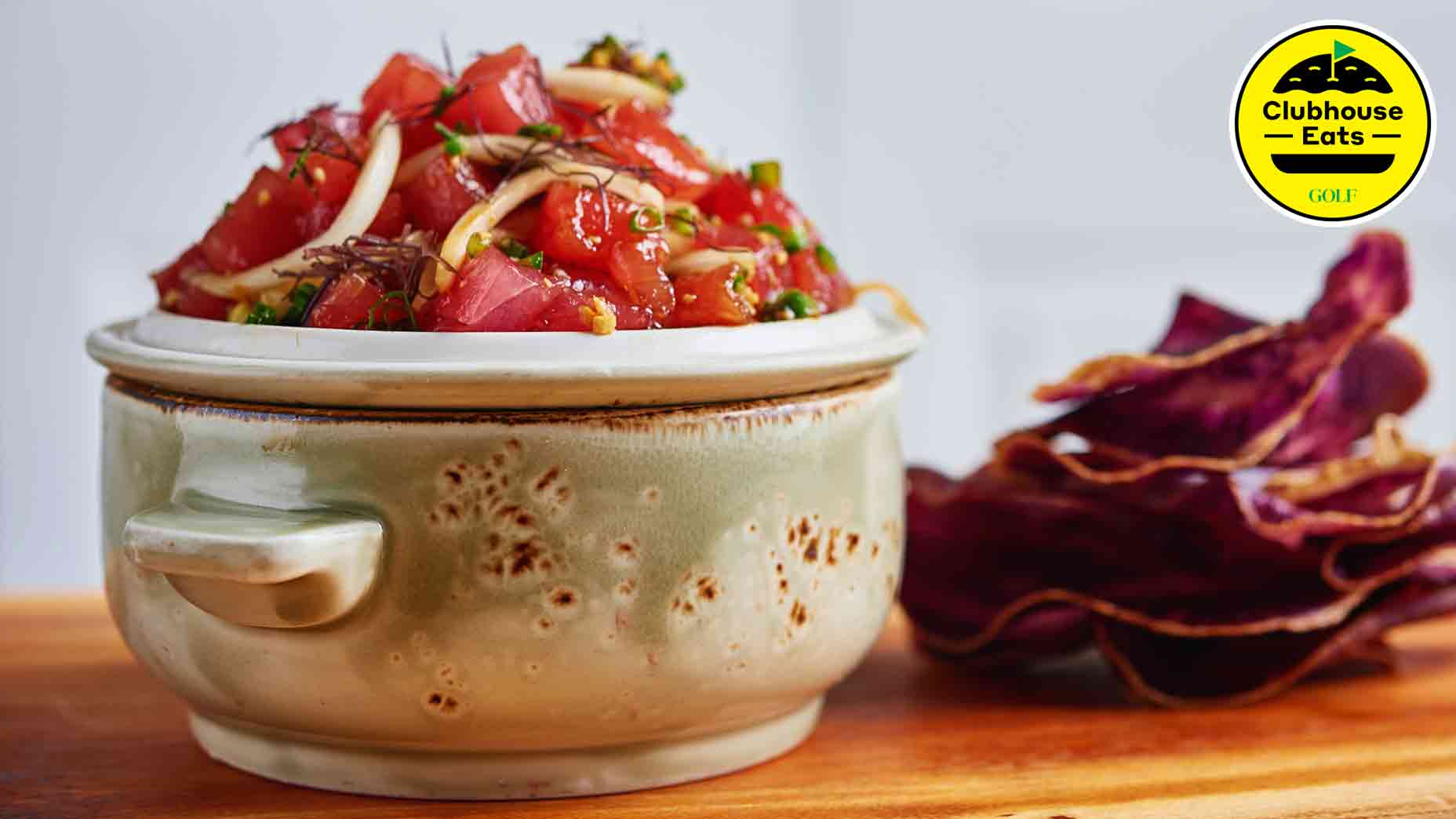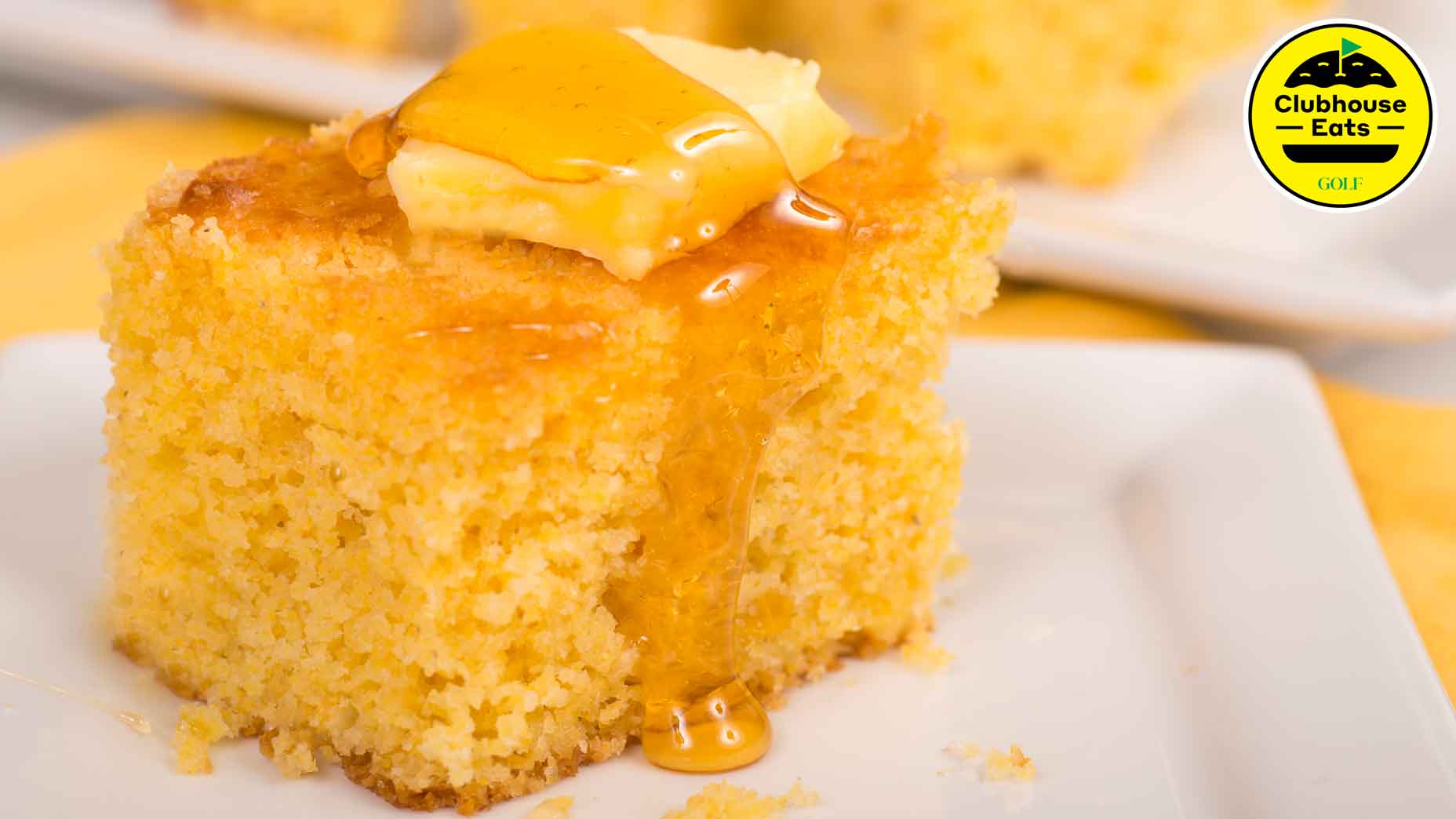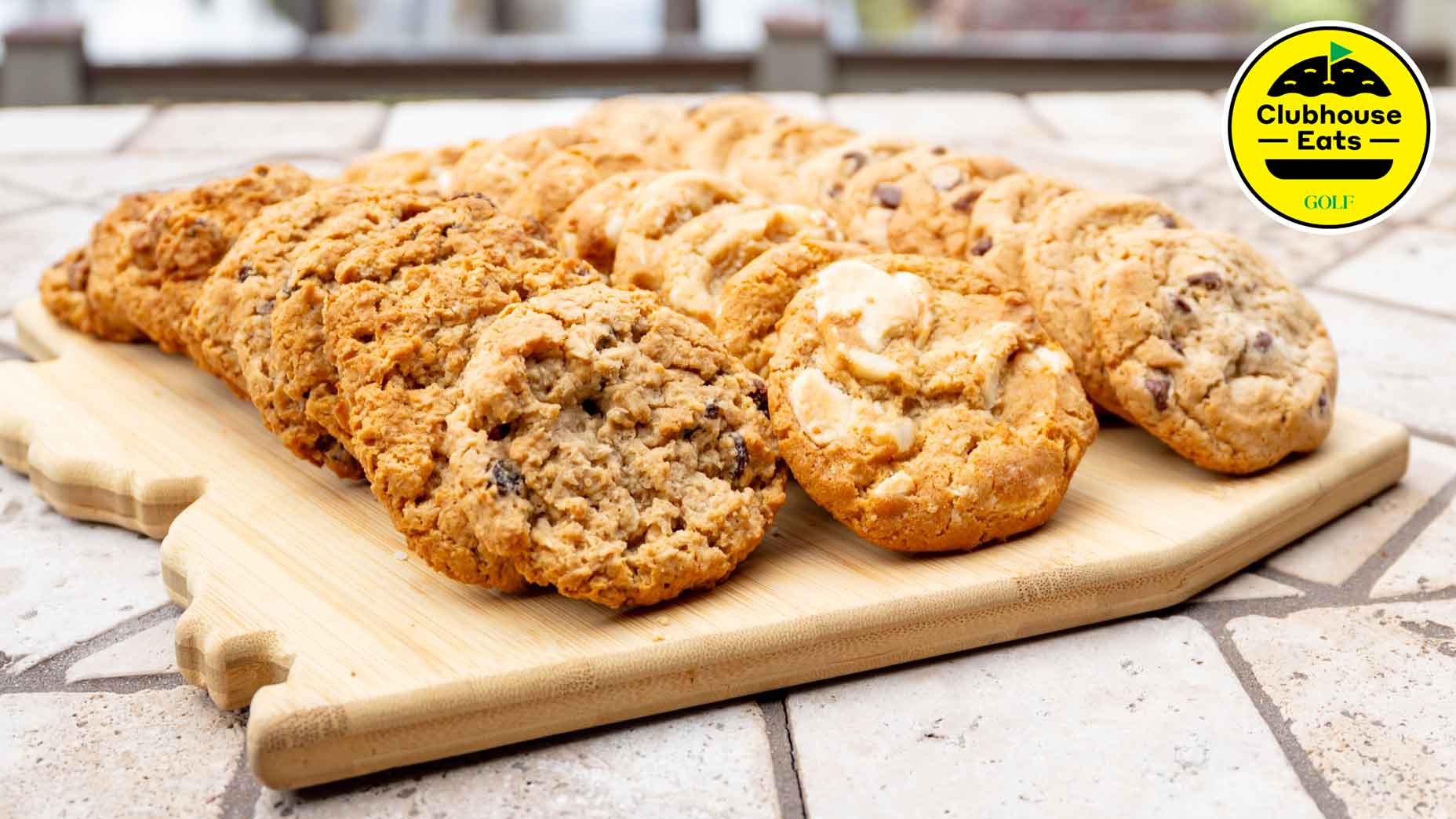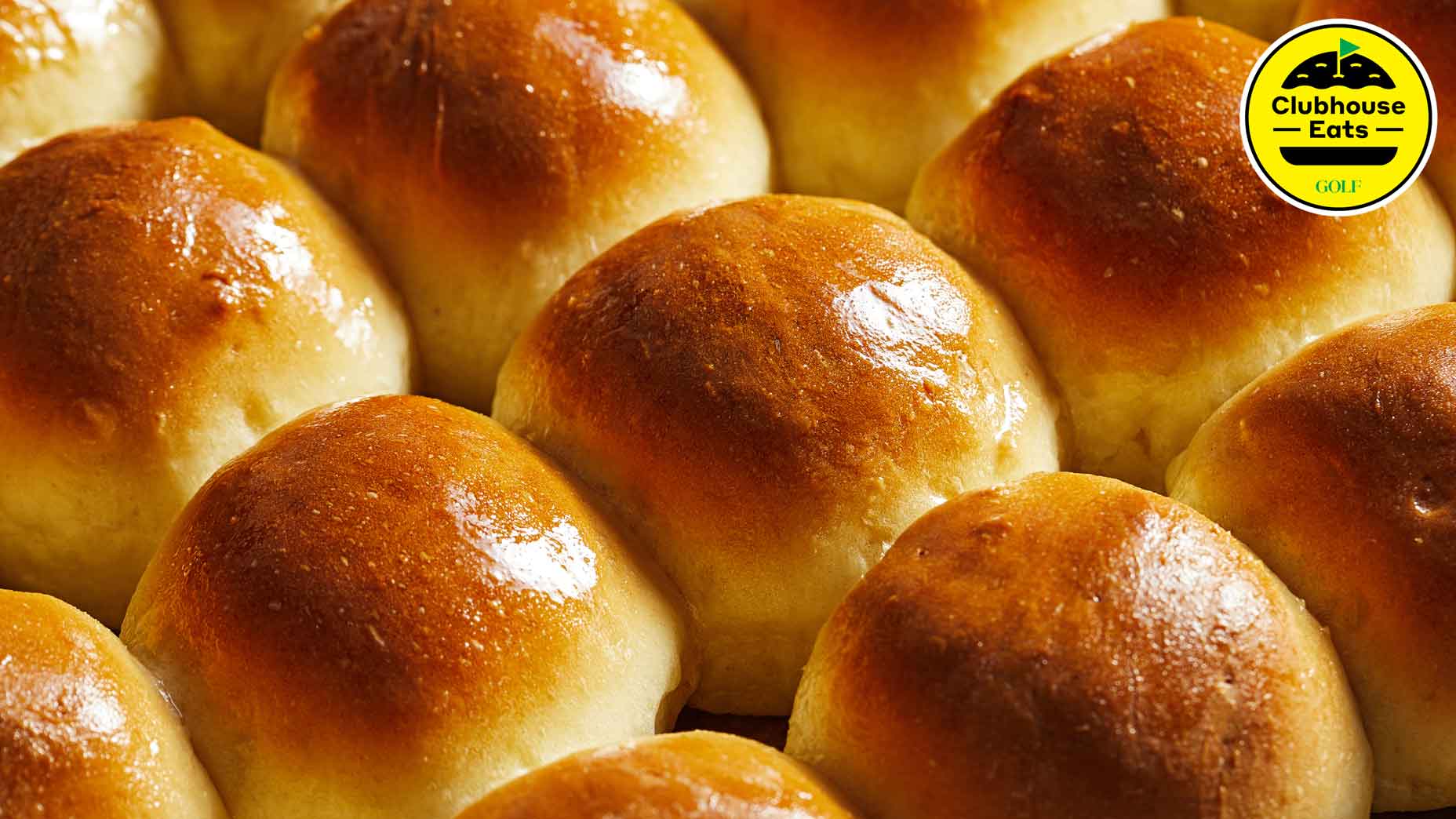Welcome to Clubhouse Eats, where we celebrate the game’s most delectable food and drink. Hope you brought your appetites.
***
Though the PGA Tour already wrapped up a brief swing through Hawaii, there’s never a bad time to pay homage to a staple dish of the islands: ahi poke (pronounced “poh-kay”).
In its simplest form, poke is a salad that features an umami-rich sauce supported by bright citrus flavors and the freshest of raw fish — ahi tuna works best, at least in Hawaii, for being incredibly lean and locally sourced. “They’ve been eating poke in Hawaii for as long as humans have been here,” says Chef Peter Merriman, who opened his namesake restaurant Merriman’s inside Kapalua Resort in 2008. “It’s also very healthy. There’s not a lot of fat or added sugar, so you always feel good eating it.”
Poke dishes shine at both Merriman’s and The Plantation House, another restaurant within the Kapalua Resort, due to the high-quality fish that’s used. In fact, as Merriman acknowledges, his culinary team purchases its fish directly from fishermen, which means the restaurant’s ahi is the freshest it can be. “The single most important thing is to get high-quality fish that’s as fresh as possible,” Merriman says, offering up advice to those who wish to create their own poke dish at home. “The second most important thing is to leave the sauce and fish separate until the very last moment. It gives the bright contrast of the fresh ginger and shoyu and soy sauce. It provides a nice contrast between those things and the flavor of the fish.”
Clubhouse Eats: Just outside Chicago, the Glen Club serves up a stunning seared salmonBy: Josh Sens
Jared Krausen, the executive chef at The Plantation House, also recommends a delicate touch — both in how the fish is dressed and how much of that dressing is used. “Be very light and gentle with the tossing,” he says. “Handle it with care. And I wouldn’t overdo it with the sauce. You don’t need it sopping in the liquid.”
If you’re adding ginger to your sauce, make sure you’re peeling it and mincing it yourself. “Don’t even use ginger if it’s not fresh,” Merriman says. Similarly, he recommends splurging on a high-quality bottle of soy sauce or shoyu, since it’s the foundation of the sauce — the Merriman’s recipe (see below) uses Tamari.
Chef Merriman urges at-home cooks to keep the fish as cold as possible both during the preparation and also in presentation, which is why he sets a mixing bowl over ice before adding the fish, vegetables, and sauce. And a sharp knife is a must, since the goal is to create really clean cubes of fish. Above all, he declares that the old adage of less is more will serve you well when creating your own poke dish at home. “Nowadays, there are as many recipes for poke as there are people making it,” he says. “Just don’t try too hard with your poke; it’s a simple dish.”
How to Make Merriman’s Ahi Poke
Poke Sauce
Ingredients:
1 cup tamari
.5 cup sesame oil
.25 cup freshly squeezed lime juice
4 large cloves garlic, minced (about 2 tablespoons)
1 (2-inch) piece fresh ginger root, peeled and minced (about 2 tablespoons)
5 scallions, washed and sliced into 1/8-inch rounds
1.5 tsp. sambal oelek
Clubhouse Eats: Kiawah Island Club’s Shem Creek shrimp salad roll is a locally-sourced delightBy: Jessica Marksbury
Preparation:
Place all ingredients in a blender or food processor. Puree until smooth. (Can be made ahead and stored in an airtight container in the refrigerator for up to two weeks.)
Fish
Ingredients:
1 lb. sashimi-grade ahi tuna, cut into 3/4 inch dice
1/2 sweet onion, sliced paper thin
10 scallions, finely sliced (both white and green sections)
.25 cup of red ogo seaweed (optional)
.25 tsp. red pepper flakes
.75 cups Poke Marinade
1/4 avocado, peeled and cut into ½-inch dice (optional)
Preparation:
Place a medium bowl over ice. Add tuna, onion, and scallions.
If using ogo, roughly chop while maintaining the threads and stems. Add to tuna mixture, then add chili flakes and Poke sauce. Stir to combine, evenly coating the tuna in the sauce and mixing the vegetables. Garnish with avocado, if desired, and serve immediately with sweet potato chips or taro chips.
Serves: 6 to 8 as an appetizer.












